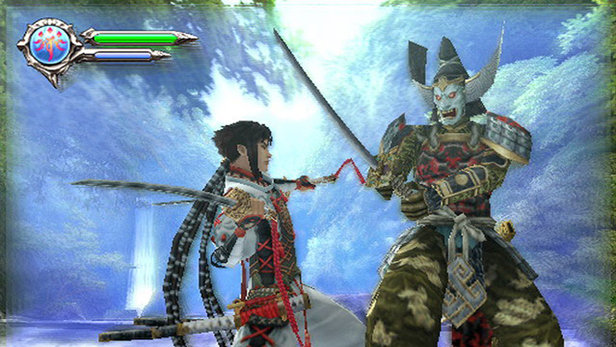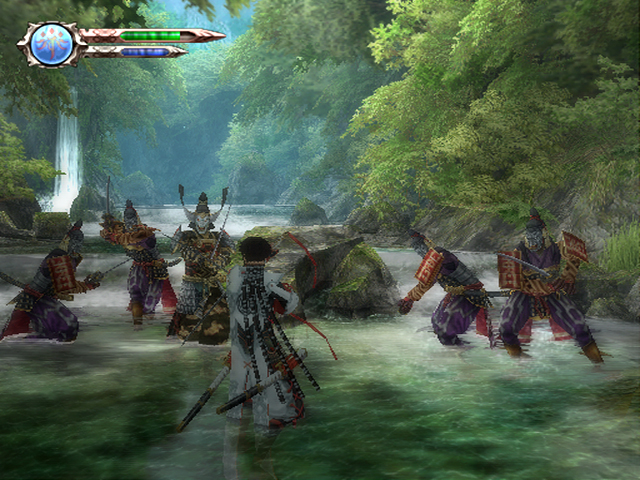The debut release from Game Republic, a firm established by former Capcom executive Yoshiki Okamoto, is Genji: Dawn of the Samurai. It is a timeless tale of two noble warriors set in a gorgeous and elegant medieval Japan. It is a brief, straightforward action game with lovely graphics, great music, and one unique, if gimmicky, gameplay idea.
Genji looks and feels incredibly similar to Capcom’s Onimusha games, so if you have played any of them, the similarities will be immediately noticeable. Genji keeps loyal to both Japanese folklore and spectacular cut-’em-up action, which will please fans of both. This third-person action adventure is top-notch.
On the other side of the bend, in a unique area reserved for people who have experienced extraordinarily lifelike experiences, Genji’s sights can be located. Ignore the way the grass sways in the wind and the way the leaves fall to the ground.
Instead, go into the details and savor the rich, peaceful beauty of an exceptionally varied color palette. Bright, effervescent pink cherry blossoms burst across the screen, creating a lovely contrast with the softer greens and browns of the nearby woodland.
A small Japanese hamlet from the 12th century seems to be a must-see destination for gamers. The little chicks and hawks that were circling were also wonderful additions.
A Japanese Action Fest

The mythological concept of Genji’s narrative centres around rare magical stones known as Amahagane. These stones grant the bearer access to Kamui’s power, allowing a single warrior to kill hundreds of adversaries in the blink of an eye. The game takes place in late-13th-century Japan, when the Heishi, a strong family of warriors, has gained control of the land.
As you might assume, the Heishi aren’t precisely lovely and fair overlords. The Heishi are on a mission to acquire all of the Amahagane so that they might further strengthen their power and obtain immortality and ultimate domination. The Amahagane they wear endows the Heishi generals with godlike powers, allowing them to slay any opposing armies swiftly.
You will play as Yoshitsune, the game’s main character, a youthful warrior with his own Amahagane. Your mission is to locate all of the surviving Amahagane and utilise them to overthrow Heishi. On your assignment, you’ll battle a lot of faceless thugs and challenging bosses, and your power will get more significant as you acquire Amahagane.
Early on in the game, you’ll meet Benkei, a lumbering monk hell-bent on destroying the Heishi with his mighty smashing weapons. Benkei joins you in your battle, and you can swap between the two characters at any time during the game. Which fighter you pick is primarily a question of personal choice. To enter particular sections or acquire hidden goods, you occasionally require Benkei’s strength or Yoshitune’s agility. For example, there are several robust doors that Yoshitsune cannot open in the game, but Benkei can quickly push open.
Since this is a simple action game, you’ll spend the most of your time destroying drones, gathering riches, and fighting a succession of massive monsters. Genji’s battle is incredibly gratifying, and the fact that you can switch between the two characters is just the cherry on the top. Combat controls are straightforward but effective.
A basic attack is initiated by pressing the square button, which may be linked together to generate combos. The triangle button makes a forceful yet one-of-a-kind blow. There are also jumping attacks, and while using certain weapons, you may hold down one of the strike buttons to launch a charge attack that deals a lot of damage while leaving you susceptible. The Kamui power is the most significant component of Genji’s battle. As you fight adversaries, your Amahagane will charge up when you have one full bar of energy; press L1 to use your Kamui power, which slows time to help you refine your reflexes.
This will cause all of the opponents in the area to attack you. A little square button symbol will appear at the bottom of the screen, at the right time during their attack. You can evade the opponent’s assault and launch a devastating counterattack if you press the square button before the symbol disappears. Finally, we’d like to call attention to Genji’s musical compositions. It’s just fantastic. It’s just the kind of soundtrack that a fan may want to buy and listen to repeatedly. Emotional and exciting tunes chase subdued Japanese rhythms. And in the midst of it all, the trees appear to speak in a simple, lovely stillness.
Marvelous Gamers Review

Genji is outstanding and authentic to its genre, considering that it is a debut project. It does fall flat in the story and graphics area but makes up with its gameplay’s simplistic and fun nature. The level designs are stylish, and the music is excellent.
What makes Dawn of the Samurai so tough to criticise is how it manages to entertain even when it’s running out of steam.
In the comments, let us know which other games you want us to talk about below. Check out our other videos and drop a like and share if you enjoyed this one. See you in the next one.
